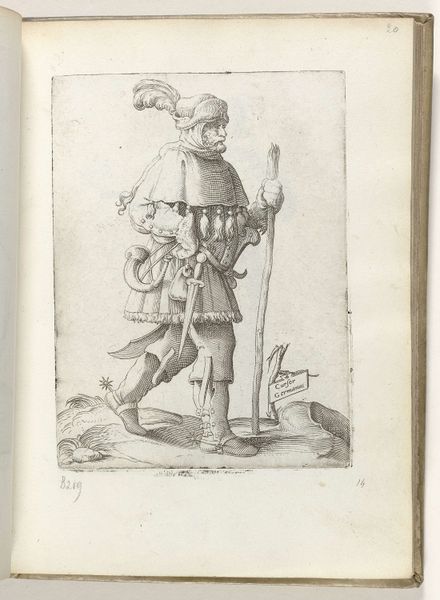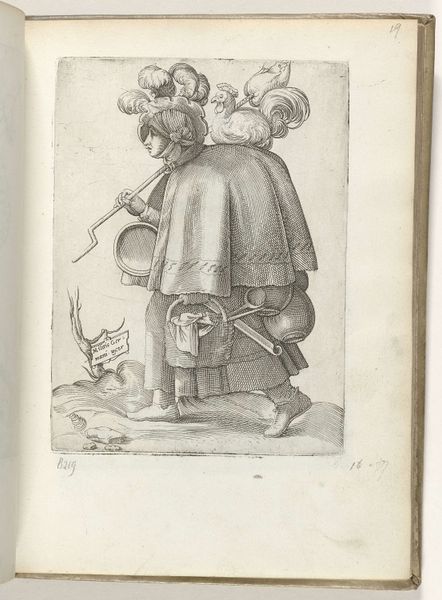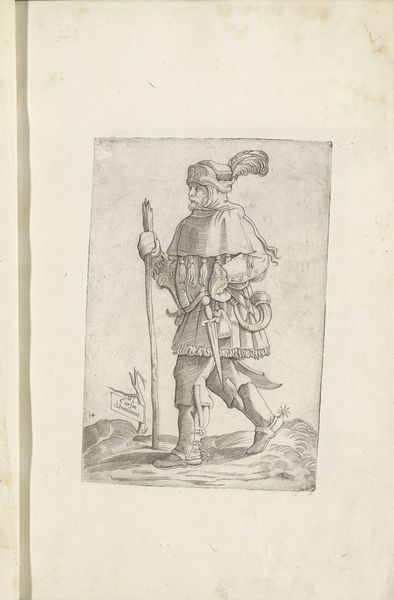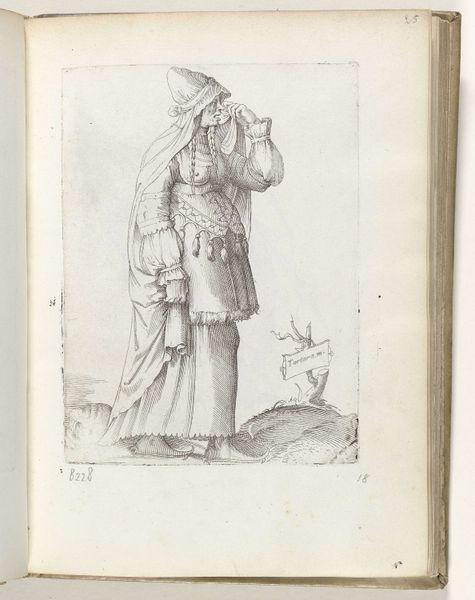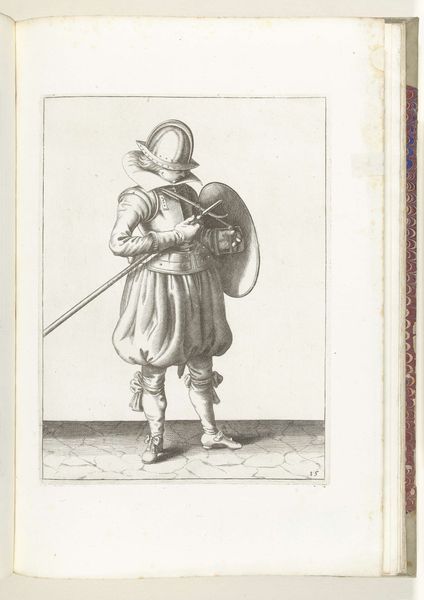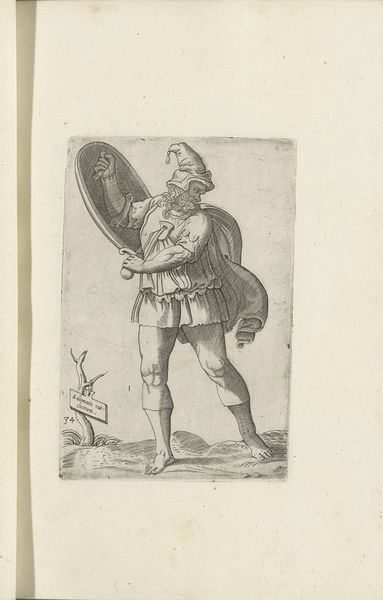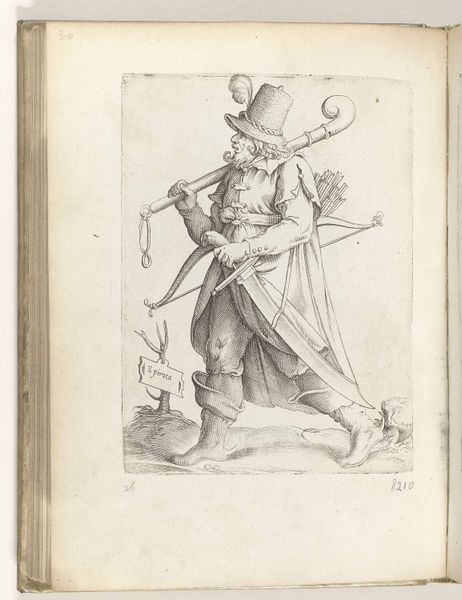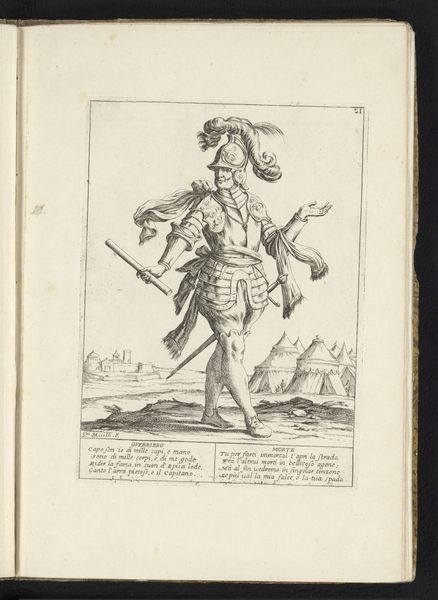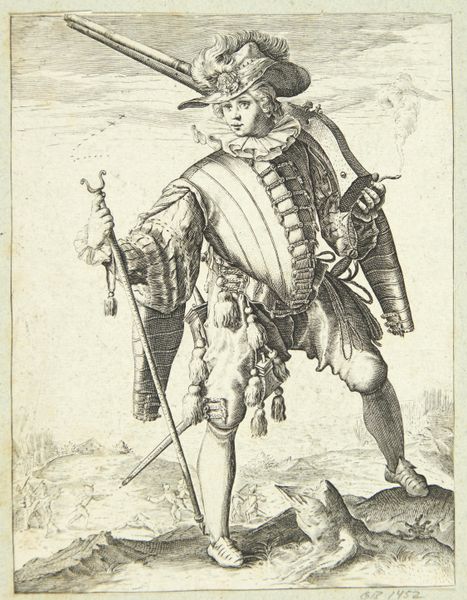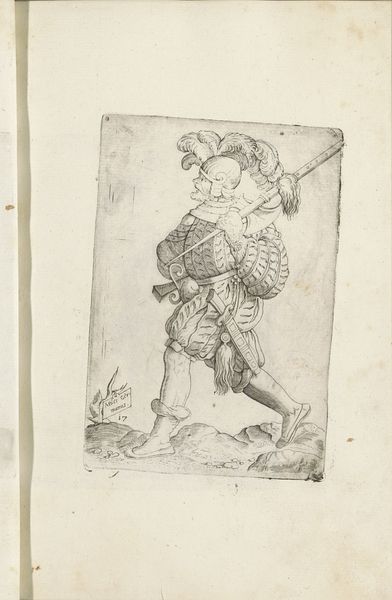
drawing, print, metal, engraving
#
portrait
#
drawing
# print
#
metal
#
figuration
#
11_renaissance
#
history-painting
#
italian-renaissance
#
engraving
Dimensions: height 150 mm, width 92 mm
Copyright: Rijks Museum: Open Domain
Editor: This is "Miles Germanus," an engraving by Enea Vico from before 1558. It depicts a fully armored soldier striding confidently. I’m immediately struck by how the detailed etching makes his armor seem almost puffed up and cartoonish. What do you see in this piece, especially considering its historical context? Curator: Well, what immediately jumps out to me is the role these types of prints played in disseminating ideas and imagery across Renaissance Europe. Vico wasn't just creating art; he was participating in a broader cultural conversation about power, military prowess, and even societal anxieties. Think about the audience: Who was likely looking at this print and why? Editor: I guess it wasn't about personal artistic expression so much as spreading information or promoting certain ideals. It’s at the Rijksmuseum, right? Would it be exhibited alongside armor and weapons from the era, to emphasize accuracy, or next to other engravings by the artist? Curator: Both could be the case. Its placement significantly impacts the interpretation. Displaying it amongst weaponry underlines its connection to military technology and its potential to reflect power dynamics of the period. Grouping it with Vico’s other engravings may encourage a stylistic and thematic comparison of his wider output. What’s particularly interesting is the small tablet near his feet, inscribed with "Male creditum redeunt". Do you know what the possible socio-political meanings can be interpreted from that Latin inscription? Editor: I would say, something like "trust badly comes back," which sounds like a cautionary tale. That’s a detail I completely missed. I assumed it was an inconsequential element. Curator: Precisely! The print might be intended as a commentary on trustworthiness or perhaps even an ironic jab at the idealized image of the soldier. Consider also the function of printing in society: the relative availability of multiples transformed access to the elite. What would such imagery mean to diverse audiences? Editor: So it's not just about the image itself, but how it functions within society. I’m starting to appreciate how this print reflects broader historical narratives about trust and power. Curator: Exactly. Examining the social and cultural context allows us to decode the artwork’s deeper significance. Hopefully it has made you consider the multiple facets to interpreting visual art from this period. Editor: Absolutely, I now have a new perspective on Renaissance prints and their significance!
Comments
No comments
Be the first to comment and join the conversation on the ultimate creative platform.
